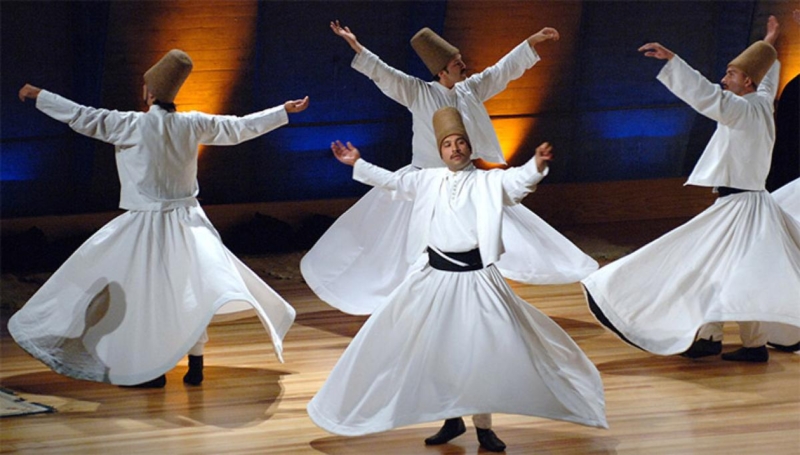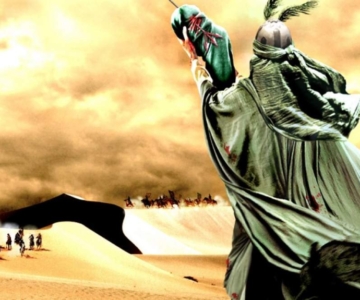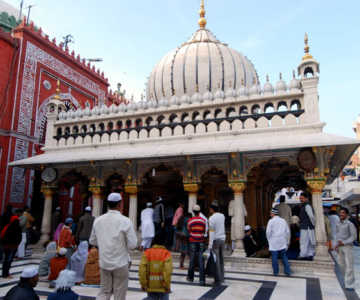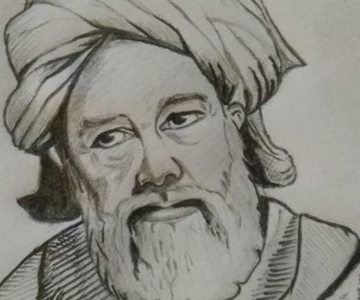“…The Chishti school of Sufism did not exclude any religion and gave way to a plural Indian identity. This is why the extremists in Pakistan, especially the Taliban, are against such devotional practices In 2010, the dargah of Baba Farid in Pakistan, another saint of this Sufi order, was bombed…”
This is a fabulous piece published in Livemint.com..
On entering, the white dome attracts your attention. It’s not the architecture or the gold centrepiece at its top. Nor the birds circling it. This dome seems to shape and consecrate every moment of this place. The fakirs (ascetics) near the ablution pool face it. So do the pilgrims in the marble courtyards. The Khwaja’s tomb is directly below.
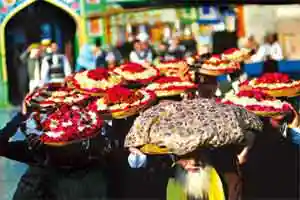
Four months later, when Rajasthan’s desert winter has given way to the heat of June, the dargah will be filled with lamps. Its assembly hall, resounding with the sound of the qawwals harmoniums, will herald the 800th urs of Khwaja Moinuddin Chishti of Ajmer. Smaller groups of musicians will draw their own listeners within the various courtyards and sama (a gathering listening to mystical verse) music will echo in the streets. The terraces surrounding the dargah will come alive with their own qawwali gatherings and the last melodic strains will die only when the early morning prayer is called by the muezzin.
As the cliche about the intolerant Muslim refuses to go away, as Sufism remains anathema to a section of Muslims, what is the significance of South Asia’s most important Sufi shrine?
The 800th urs is taking place in a troubled world where the religious discourse has been hijacked by the rhetoric of rage, says Syed Salman Chishti, a khadim (caretaker) whose family has served at the 13th century shrine for generations. The world must turn its attention to Ajmer, where people from different faiths gather in one assembly to share and not to impose their beliefs.
The world instead turned its attention to a city 120km from Ajmer, where a protest by a handful of Muslims compelled the organizers of the Jaipur Literature Festival to cancel novelist Salman Rushdie’s video appearance last month. While all practising Muslims this reporter talked to expressed discomfort with Rushdie’s references to Islam in his banned novel The Satanic Verses, many pointed out that his case must not be used to judge the Muslim character and that the essence of India’s Islam lies in Ajmer.
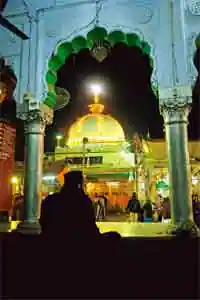
Moinuddin Chishti’s dwelling place became a nucleus for the Islamization of the central and southern parts of India, noted the late Annemarie Schimmel, an expert on Islam, in her book Mystical Dimensions of Islam. South Asia’s most revered Muslim, Moinuddin Chishti occupies a principal position in Sufism, the mystical aspect of Islam. He established the Chishti silsila (order) in the subcontinent; its spiritual successors were Sufis like Khwaja Qutubuddin Bakhtiar Kaki of Mehrauli, Baba Farid of Pakpattan in Pakistan, and Hazrat Nizamuddin of Delhi. Known as Sultan-e-Hind and Gharib Nawaz, Khwaja Moinuddin Chishti khwaja meaning master in Persian is visited by millions each year. Since no contemporary account of him has survived, Moinuddin Chishti’s life is depicted through a series of legends.
He died in 1236. The death anniversary of a Sufi saint’s death is not mourned, it is celebrated. Urs means wedding in Arabic and it symbolizes the union of the lover with the beloved, who is God.
The 800th milestone doesn’t signify much in our religion but it lets us pause to commemorate the central place of Gharib Nawaz in the idea of India, says film-maker Muzaffar Ali, who will present the 10th edition of his annual Jahan-e-Khusrau Sufi music concert in Delhi in March. In a multi-ethnic, multicultural, multi-religious country, nothing could be more relevant than Gharib Nawaz’s message of love.
Ajmer is the little Medina, says Sadia Dehlvi, author of Sufism: The Heart of Islam. Sufism is about making linkages to God through his friends. In Medina, there is the spiritual presence of Prophet Muhammad. In Ajmer, one experiences the same closeness to God, for Khwaja sahib is a direct descendant and lover of the Prophet, says Dehlvi.
Outside Ajmer, the news from the world of Sufis is not only about sama, fanaa (dissolution) or the chartbuster film song Kun Fayakun. We can no longer keep ourselves inside our dargahs, says Maulana Syed Mohammad Ashraf Kachochavi, the general secretary of the All India Ulama and Mashaikh Board (AIUMB), which was formed in 2005 and claims to represent the majority of Muslims in India. Last year, it held four Sufi Maha Panchayats in Uttar Pradesh and Bihar that were attended by hundreds of thousands of people, according to news reports. We are telling India’s non-Muslims that the people the media and the government treat as spokespersons of our community, are not our leaders. Those who issue fatwas from seminaries like Deoband are inspired by extremists.
South Asia’s Islamic community is largely composed of the Barelvis and Deobandis, both named after towns in Uttar Pradesh. The former, who have their theological school in Bareilly, are followers of Sufism, while the orthodox jurists in Deoband are against the concept of intercession to God through saints. In November, Deoband passed a fatwa against celebrating the Prophet’s birthday, calling it un-Islamic, an occasion traditionally held with great fanfare in Ajmer and other dargahs.
Considering that these orthodox seminaries are opposed to the dargahs, says Dehlvi, one only has to look at the sheer number of Muslims from India’s villages and towns who descend on Ajmer, particularly during urs, to recognize how irrelevant they (the orthodox seminaries) really are. Their fatwa shave little or no relevance in the community.
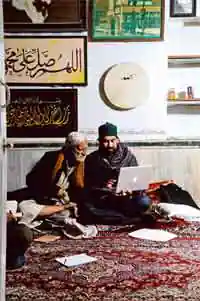
While it’s incorrect to say that our fatwas have no influence you should note that we don’t issue them on our own, says Maulana Qari Syed Mohammad Usman, the hadith (the sayings of the Prophet) teacher at Deoband and president of the political party Jamiat-Ulama-i-Hind. We only give one if somebody asks for clarification on a certain matter. We don’t take any action if the fatwa is ignored.
Explaining Deoband’s stand on Sufism, Usman says: In Islam, there is only Islam, no Sufism. We don’t mind if people go to tombs to recite fatiha (prayer for the departed souls) but we are against the dargah traditions, especially on attending urs festivals. Spend your time thinking of Allah, not listening to qawwalis.
The Deobandis subscribe to a more textual analysis of the Quran, says historian Mushirul Hasan, the author of Islam in the Subcontinent: Muslims in a Plural Society. Barelvis take a more eclectic view and have practices that can be described as composite. Their daily life is closer to the customs of other Indian communities. If you go by the population, Barelvis both in India and Pakistan are greater in numbers. But Deobandis are politically better organized and so are more visible in the public space.
Sometimes even Deobandis come here to seek the Khwaja’s blessing, says Syed Anwar-ul-Haq Chishti, an elderly khadim sitting cross-legged in the Ajmer dargah. A long queue is forming for the sunset ceremony of Dua-e-Roshni (prayer of lights). Each evening as khadims carry large yellow candles to the durbar, the tomb-chamber, hundreds of birds suddenly land on the branches of the mursali tree. Little else is heard in the courtyard except for their chirping. As the drummer strikes, the candles are lit amid the chanting of a Persian invocation to Gharib Nawaz, acknowledging him as the foremost friend of God on the face of the earth.
Ajmer Sharif is the extension of what I am, says film-maker Mahesh Bhatt. Being the son of a Shiite mother and a Brahmin father, my biological construct is a union of Muslim and Hindu cultures. There are more Hindus visiting the dargah than Muslims. It is the Khwaja’s wide appeal that has kept his cult going.
In 2011, some of the celebrities who visited the dargah included actors Amitabh Bachchan, Shah Rukh Khan, Kajol, Priyanka Chopra, producer Ekta Kapoor, cricketers Tillakaratne Dilshan and Zaheer Khan.
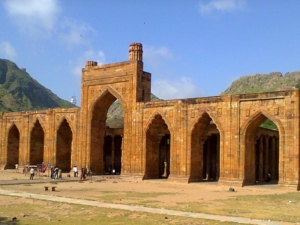
While the aforementioned list might reflect a present-day curiosity for Sufism, throughout its history Ajmer has been a star attraction. The Mughals, particularly, attributed their success in India to the blessings of Moinuddin Chishti. Emperor Akbar visited the dargah 14 times, once walking all the way from Agra. Jehangir lived in Ajmer for almost three years. Shah Jahan built a marble mosque in the dargah. Princess Jahanara raised the marble porch Begumi Dalaan (Begum’s courtyard), opposite the entrance to the durbar. Even the orthodox Aurangzeb, who did not believe in the Sufi doctrine, was seen paying his respects at this dargah.
In 1911, when Delhi was established as British India’s new capital, Queen Mary passed through the pilgrim town, paying for the restoration of the ablution pool.
On 11 October 2007, during Ramzan, a bomb exploded below the same mursali tree. Three people died. The alleged suspects were first thought to be Islamic extremists and later, Hindu.
The aim was to oppose the stream of thought on which Ajmer is built, says Bhatt.The idea of the Other is not a threat in the Khwaja’s dargah, which is like a garden where the rose is not frightened of the mogra. Both have a distinct fragrance and together they make the scent.
As the winter sun sets behind the barren Aravalli hills, the marble floor gets cold. Qawwals sit facing the durbar; some listeners look lost, others gaze at the dome. Among the devotees, the Kashmiri’s stand out in their loosely hanging pherans. A woman in a red sari has her hands folded in prayer. She is sobbing.
Although people of all religions visit Ajmer Sharif, its daily rituals revolve around the five mandatory prayers of Muslims. This is not surprising since Moinuddin Chishti was one of the pioneers of Islamic mysticism in the subcontinent. His arrival from central Asia in 1192 coincided with the conquest of India by Muhammed of Ghor, who defeated Prithviraj Chauhan, one of the last Hindu kings to rule Delhi. After settling in Ajmer, a Hindu pilgrimage town close to the holy lake of Pushkar, Moinuddin Chishti won the respect of both believers and non-believers. He lived in the cell in which he lies buried. The tomb is built over a series of cellars which, according to The Shrine and Cult of Mu’in al-din Chishti of Ajmer by P.M. Currie, might have formed part of an earlier temple.
Before reaching Ajmer, says Raza Rumi, a writer and political analyst from Pakistan, Moinuddin meditated in Lahore for 40 days at Data Darbar, the shrine of Usman Hajvery. Gharib Nawaz consequently is cherished in Pakistan and hundreds of Pakistanis visit his dargah. India issues special visas to Pakistanis for the urs.
Fifteen minutes away from the dargah is the majestic Adhai Din Ka Jhonpra mosque situated in the foothills of Taragarh. One of South Asia’s earliest Islamic structures, its outer walls are sculptured with the Kalimah (the word of Islam). The monument, now overlaid with graffiti, includes crude sketches of peacocks on the stone floor. Indifferent to the discords of the past, goats meander along with pilgrims who stray from the dargahto sightsee. Only a few offer prayers at the mosque here.
The majority of Indian Muslims were Hindus, says Dehlvi, and accepted Islam because of Gharib Nawaz and the Sufis who spread his message. The Khwaja allowed his followers to express the love of God through inclusive traditions such as music. This sanction gave birth to diverse devotional expressions that thrive to this day. The food cooked in the dargah‘s giant copper cauldrons, distributed after the morning and evening prayers, is always vegetarian.
Rumi says, The Chishti school of Sufism did not exclude any religion and gave way to a plural Indian identity. This is why the extremists in Pakistan, especially the Taliban, are against such devotional practices. In 2010, the dargah of Baba Farid in Pakistan, another saint of this Sufi order, was bombed.
As with most places in India, the bazaar in front of the dargah is a world of contrasts. Immaculately dressed men in crisp white salwar-kurta walk beside open drains. Beggars line the road that leads to the shrine of the patron of the poor. The alm-seekers might not have money for clothes but their bowls are filled with chameli garlands. Plastic flowers decorate the tongas that go as far as the Khwaja’s chillah, the hilltop cave where he meditated. Overlooking the Ana Sagar lake, the chillah is deserted. Cats prowl beside tombs. A stall offers amulets and booklets on Ajmer Sharif…
Read the full story here
